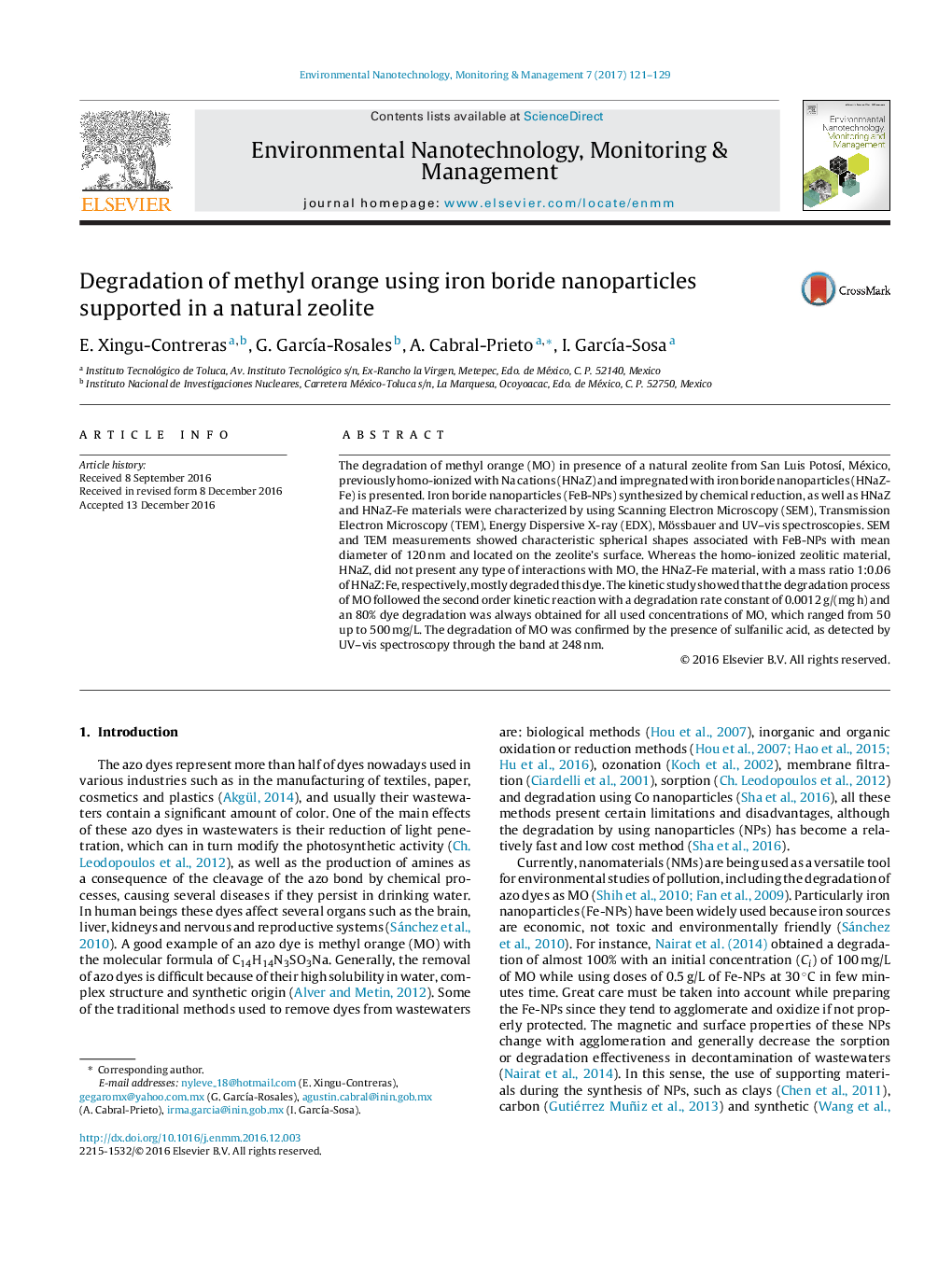| کد مقاله | کد نشریه | سال انتشار | مقاله انگلیسی | نسخه تمام متن |
|---|---|---|---|---|
| 5748529 | 1619100 | 2017 | 9 صفحه PDF | دانلود رایگان |
- High removal efficiency of methyl orange by minimal amounts of iron boride nanoparticles.
- Spherical iron boride nanoparticles supported on the surface of natural zeolite clinoptilolite are produced.
- Core-shell iron boride nanoparticles are obtained by chemical reduction as identified by Mössbauer spectroscopy and TEM.
- The main interaction between methyl orange and the Fe2B nanoparticles was the degradation by-product sulfanilic acid.
- An 80% removal of methyl orange was always obtained for all concentrations used, ranging from 50 to 500Â mg/L in 16Â h.
The degradation of methyl orange (MO) in presence of a natural zeolite from San Luis PotosÃ, México, previously homo-ionized with Na cations (HNaZ) and impregnated with iron boride nanoparticles (HNaZ-Fe) is presented. Iron boride nanoparticles (FeB-NPs) synthesized by chemical reduction, as well as HNaZ and HNaZ-Fe materials were characterized by using Scanning Electron Microscopy (SEM), Transmission Electron Microscopy (TEM), Energy Dispersive X-ray (EDX), Mössbauer and UV-vis spectroscopies. SEM and TEM measurements showed characteristic spherical shapes associated with FeB-NPs with mean diameter of 120 nm and located on the zeolite's surface. Whereas the homo-ionized zeolitic material, HNaZ, did not present any type of interactions with MO, the HNaZ-Fe material, with a mass ratio 1:0.06 of HNaZ:Fe, respectively, mostly degraded this dye. The kinetic study showed that the degradation process of MO followed the second order kinetic reaction with a degradation rate constant of 0.0012 g/(mg h) and an 80% dye degradation was always obtained for all used concentrations of MO, which ranged from 50 up to 500 mg/L. The degradation of MO was confirmed by the presence of sulfanilic acid, as detected by UV-vis spectroscopy through the band at 248 nm.
135
Journal: Environmental Nanotechnology, Monitoring & Management - Volume 7, May 2017, Pages 121-129
